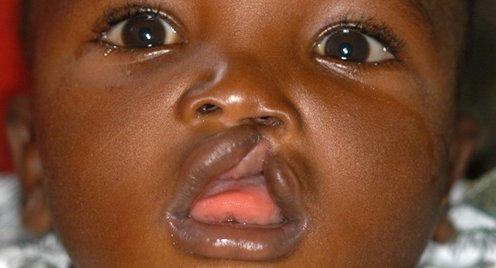Cleft lip and Palate Foundation

Cleft lip and cleft palate comprise the most common birth defect in the United States. One of every 600 newborns is affected by cleft lip and/or cleft palate.
A is a separation of the two sides of the lip. The separation often includes the bones of the upper jaw and/or upper gum.
A is an opening in the roof of the mouth in which the two sides of the palate did not fuse, or join together, as the unborn baby was developing. Cleft lip and cleft palate can occur on one side (unilateral cleft lip and/or palate), or on both sides (bilateral cleft lip and/or palate). Because the lip and the palate develop separately, it is possible for the child to have a cleft lip, a cleft palate, or both cleft lip and cleft palate.
Cleft lip and cleft palate are congenital defects, or birth defects, which occur very early in pregnancy. The majority of clefts appear to be due to a combination of genetics and environmental factors. The risks of recurrence of a cleft condition are dependent upon many factors, including the, the closeness of affected relatives, the race and sex of all affected persons, and the severity of the clefts.
A child born with a cleft frequently requires several different types of services, e.g., surgery, dental/orthodontic care, and speech therapy, all of which need to be provided in a coordinated manner over a period of years. This coordinated care is provided by interdisciplinary cleft palate/craniofacial teams comprised of professionals from a variety of health care disciplines who work together on the child’s total rehabilitation.
You might also like
|
Management of Cleft Lip and Palate and Associated Deformities: v. 8: Symposium (Proceedings of the symposium of the Educational Foundation of the ... of Plastic and Reconstructive Surgeons, v. 8) Book (Mosby)
|




